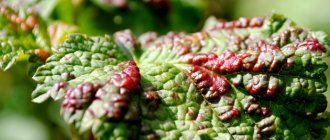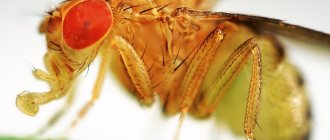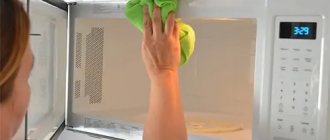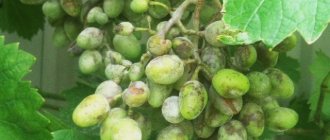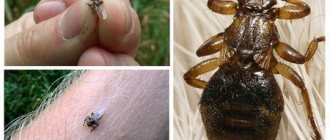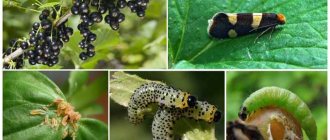The weevil often settles next to a person and very quickly makes pasta, flour and cereals unusable. It can be found in any country. Despite the fact that these bugs cannot fly, their migration to new territory occurs at record speed.
If a weevil is found in an apartment, you need to get rid of it immediately, since females lay a lot of eggs. By the way, you can only see adult insects, and the eggs and larvae are inside the cereal grains. Therefore, it is unknown how many more of them will appear. It is important to know how to get rid of weevils in an apartment. This is a serious issue that requires careful consideration.
What is a pest
Weevils appear in an apartment (photo) quite often, especially when cereals and pasta are stored improperly. This beetle has a long history, since the first mentions of it were found in Ancient Egypt.
Even then, the insect penetrated into storage facilities and destroyed supplies. Although the beetle primarily prefers tropical climates, some species thrive in harsher conditions. Over the years, it has not lost its activity and quite often appears where various products are stored. Therefore, it is important to know how to deal with it and prevent it from appearing where food is stored.
It is quite difficult to see what a weevil looks like, since the size of an adult insect is on average 3.5 mm. At the initial stage of its development it is light brown, but as it grows it acquires a more saturated shade. The weevil got its name because of the special structure of its elongated head, which crowns its body, which is shaped like a cylinder. The insect cannot fly, but it moves very quickly with the help of its legs.
Its distinctive feature is its very powerful jaws, so a weevil in an apartment can easily destroy the integrity of the packaging material and get to the products. For its comfortable living, the temperature should be 10-25 degrees, humidity - 65%.
The female beetle gnaws holes in the grains and lays eggs in them, from which larvae emerge after about 2 weeks. As they develop, they eat the grains from the inside and pupate. The hatched bug gnaws through the wall of the cereal and ends up outside. It is because of this that insects are very difficult to detect at an early stage. Adult individuals become noticeable.
The structure of weevils varies somewhat depending on their species. They come in short-proboscis and long-proboscis varieties. Their main feature is the length of the rostrum and the location of the mouthparts. They can also develop inside the plant or in the soil.
Bugs reproduce in warm weather. Some species produce offspring without fertilization. In a favorable climate, the reproduction process occurs all year round.
Description
Weevils range in length from 1 to 30 mm, while tropical species grow up to 5 cm in length. The body shape of beetles of this genus can be flat and oblong, cylindrical, rod-shaped, rhombic, spherical, convex hemispherical or pear-shaped. The color varies from yellow to black, there may be spots on the body, and it may have a metallic tint. The insect's legs may differ in color from the body.
The upper part of the weevil's body may be hairy or bare, and may be covered with an earthen crust or glazed brown scales. A characteristic feature of the insect is the elongated front part of the head - the rostrum, from which the genus of insects got its name.
Weevils are divided into two subspecies - short-proboscis and long-proboscis, differing from each other in the length of the rostrum. The larvae of long-proboscis species usually develop in plant tissues, consuming them as food, while the larvae of short-proboscis species live in the soil, feeding on plant roots.
- How to deal with bean pests
Weevils living in the middle zone prefer to live on berry crops, and they are attracted not by fruits, but by flower buds in which the female lays eggs. The larvae that emerge from the eggs eat the flower from the inside, and if there are a lot of weevils, you may not get any berries at all. However, there are also types of weevils such as house weevils and barn weevils.
What are the types
It is important not only to know where the weevils in the apartment come from, but also what types of bugs there are. In total there are approximately 65 thousand species of insects. However, only 54 thousand species live in our country. Basically, the following bugs appear in the house:
barn; rice; striped; vegetable; fruity; walnut.
The barn weevil cannot fly, but its legs compensate for this deficiency. The insect runs very quickly over long distances. Despite the fact that the bug is small, it is very voracious. The insect feasts on flour, cereals and pasta.
Quite often, rice weevils appear in an apartment, photos of which allow you to determine exactly what they look like. It destroys more than just rice. The beetle calmly feeds on other cereals, as well as bread. This type of insect can use wings. It infects grains in the fields.
The striped nodule destroys legume plants. This insect feeds not only on fruits. It also eats leaves, roots and shoots of plants. Vegetable weevils can completely destroy the entire vegetable crop in the garden.
Fruit elephants are the most important enemies of fruit trees. Bugs feed on flowers, buds and fruits. The larvae can also feed on roots. The nut weevil lays eggs in unripe nuts, in particular walnuts and hazels. In the spring, bugs hatch from the nut. They begin to spoil other products stored in the pantry or cupboard.
How to get rid of weevils on your property
Weevil on strawberry
The strawberry weevil is a gray-black long-proboscis bug up to 3 mm in size. In the spring, individuals mate in flower buds, in which the larvae then develop. How to deal with weevils on strawberries? Today, there are many ways to destroy the pest, which can save up to 40% of the crop even with total damage. The sooner you start your fight against the beetle, the more chances you have to emerge victorious.
- Spider mite / Tetranychus
In the spring, when the air temperature is uncomfortable for the pest, treat the area with strawberries with the following means:
- iodine solution - dilute a teaspoon of iodine in a bucket of water;
- dissolve 3 Intra-vir weevil tablets in 10 liters of water.
Carry out the first treatment 5-6 days before the start of flowering, the next time spraying is carried out in mid-summer. Biological preparations Antonem-F and Namabact can be used to process strawberries or garden strawberries. Until the end of spring, it is permissible to use the drugs Fitoverm, Iskra-bio and Akarin. It is advisable not to resort to stronger means, for example, insecticides such as Karbofos, Actellik and Metaphos.
Cherry weevil
The cherry weevil, also known as the cherry trumpet weevil, also known as the cherry weevil, affects not only cherry trees, but also cherry, plum, apricot, cherry plum and even hawthorn trees. This is a golden-green bug, 5.5 to 10 mm long, with a purple metallic tint. The larvae are white, dotted with sparse red hairs, with a brown head and brown mouthparts.
Weevils cause damage to the generative organs of stone fruit crops even before sap flow begins - tree buds dry out and crumble. An invasion of the cherry borer can lead not only to loss of fruit yield, but due to the death of leaves, the trees themselves may also perish.
The fight against the cherry weevil should be carried out by all possible means - preventive, agrotechnical, folk, biological, and if necessary, then chemical:
- in the fall, clean the tree trunks of old exfoliated bark, then burn the plant remains and clean the trunks with a solution of lime;
- Also remove fallen leaves from under the trees into a compost heap or burn them;
- Be sure to dig up the soil in the tree trunks;
- during the period of swelling of the buds, shake off the beetles onto white paper or cloth spread under the tree and destroy them;
- during fruit ripening, collect and destroy carrion so that the larvae do not go into the soil;
- immediately after flowering, if you find more than 8 beetles on the tree, treat it with any of the chemicals we described.
Plum weevil
This bronze-colored bug with a metallic sheen, up to 45 mm long, all covered with short thick hairs, is also called the copper pipe worm due to its appearance. Not only plums suffer from it, but also thorns, apricots, cherries, sweet cherries, and sometimes apple trees, hawthorns, rowan berries and even currants. Harm is caused both by adult insects, which consistently damage buds, buds, flowers, pedicels, young fruits and leaves, and by larvae that develop in fruits.
The fight against copper pipeweevil is carried out in the same ways as against the cherry weevil, and among the chemical preparations, pyrethroids and organophosphorus compounds are most effective against it - for example, Actellik, Fufanon or Bazudin.
Raspberry weevil
Raspberries are damaged by the same type of weevil as garden strawberries, and the main damage is caused to the plant by the female weevil, which can damage up to 30 buds in one season, laying eggs in them, from which larvae appear after 6-7 days, devouring the flowers from the inside within three weeks You can prevent weevils from appearing on raspberries by following the preventive protective measures that we have already described to you, but if preventive measures do not produce results, proceed to treating raspberries with folk remedies.
How to poison a weevil if the number of its individuals on raspberries threatens to destroy the crop? During the period of bud protrusion, treating the bushes with Taran will be justified. Before flowering and after harvesting, it is better to spray raspberries with insecticides Fufanon Expert, Karbofos, Iskra-M or Novaktion. Throughout the growing season, Alatar copes well with weevils on raspberries. Before using toxic drugs, carefully read the instructions and do not neglect safety precautions.
Nut weevil
The nut weevil, or nut weevil, is a brown bug 7-10 mm long. At the end of April, its females lay eggs in unripe hazelnuts, and the larvae, while developing, feed on their pulp, as a result of which half the harvest can be lost. Favorable conditions for the appearance of weevils on nuts are high humidity with an average daily temperature of about 19 ºC.
As a preventive measure, you can consider digging up the soil in the tree trunk to the depth of a spade bayonet, collecting fallen and wormy nuts, and you can destroy weevils on the nut before oviposition by treating the plants along the ovaries with a two percent solution of Fufanon or Actellik.
Pine weevils
The large pine weevil, or ancient spruce weevil, is a dark brown beetle 7-14 mm long. They damage three to six year old pines and spruce trees exclusively by mature individuals, eating their bark down to the sapwood. The wounds from these gnaws merge, becoming covered with resinous juice, as a result of which the entire trunk becomes tarred, and the tree dies. The pine weevil is also dangerous because it also damages deciduous trees - oak, alder, birch and others, if they are located near a pine or spruce forest.
Two more types of weevils damage coniferous trees - pine and blue pine. The pine weevil, also known as the pine weevil, is a dangerous pest of coniferous forests that damages the bark of trees, which can cause the plants to die. This is a brown beetle with yellow dots forming two longitudinal stripes on the body. The blue pine weevil is a beetle with a bluish tint that eats holes in young coniferous shoots and lays eggs in them. The larvae of the blue pine weevil eat into the wood, make tunnels there and pupate. Coniferous trees suffer from both adult blue weevils and its larvae.
Natural enemies of all types of pine weevils include rooks, crows, starlings, woodpeckers, magpies and jays, which can be attracted to the garden. Ground beetles and black beetles also eat weevils. How to remove weevils from coniferous trees using insecticides? Treat the plants with Karbofos, Metafos, Actellik or another preparation during the period of mass pest infestation.
Why are they dangerous?
The weevil beetle appears in the apartment quite often, as it settles in cereals in warehouses. Damage from an insect can occur at any stage of its life. The larvae eat the stems or roots. The acorn weevil grows directly in oak fruits and feeds on its interior.
Elephants eat almost all types of vegetation, but pests can be divided into several varieties that consume only a certain crop, namely:
berry; legumes and grains; vegetable; vineyards; fruit.
The weevil is not a predator. It doesn't bite, but it does quite a lot of damage. People should not eat contaminated foods. In such food, chitinous particles of the insect and its metabolic products are preserved. Even a healthy person can begin to suffer from intestinal disorders. Allergy sufferers and people with weakened immune systems can become seriously ill.
Insects can be responsible for dangerous bacteria and fungal infections. That is why you need to immediately get rid of the weevil in the apartment. There are many different ways to do this.
Where do weevils come from?
Quite often weevils appear in the apartment. Where they come from is of interest to many people, since bugs pose a great danger. The insect destroys all products it can reach. This pest quickly adapts to a new environment and tolerates various natural changes quite freely.
The person himself introduces weevils into the house along with food from the store or market. Cereal products become infected with them while still in the warehouse, and then end up on packaging and store shelves.
When purchasing products with weevil faces and eggs in a store, it is very difficult to notice them, since the grains remain clogged inside. And only when an adult emerges from them will it be possible to notice traces of damage and the bugs themselves.
How to deal with weevils
If weevils appear in an apartment, absolutely everyone should know how to get rid of them, since they cause quite a lot of harm. It is quite possible to get rid of insects, the main thing is to do it immediately after they are discovered in products.
If at least one bug appears, then you need to carefully check all pasta, cereals and even tea. Contaminated products should be immediately disposed of in the garbage disposal. Those products that are not near the source of infection should be protected. To do this, you can expose them to low temperatures. It is dangerous at all stages of development of this insect, so you can put the packets of cereal in the freezer for a couple of days or, if it’s frosty outside, take them out to the balcony. Alternatively, you can heat the cereal in the oven. It will be enough to keep the food in it for several hours at a temperature of 60 degrees.
After a weevil has been discovered in cereals and the affected products have been destroyed, it is imperative to wipe all the walls and shelves of the cabinets with a soapy solution, and then thoroughly treat the surfaces with vinegar diluted with water.
These are fairly simple measures that do not cause any difficulties at all. However, they are an integral part of pest control. Having carried out these activities, you can subsequently use chemical and folk remedies to combat the weevil.
Means for controlling weevils on house plants
The weevil can spoil supplies and eat plants, but fighting it will help stop the pest. There are preparations for use in apartments if it settles on flowers or cereals.
Fitoverm
A product with a natural composition to combat various pests. Belongs to the class of biological drugs. The insecticide is used for spraying. Typically, to completely eliminate pests, it is recommended to carry out 2-3 treatments at intervals of about 5-6 days. The period of protective action is up to 20 days.
Fitoverm is the best measure to combat weevils. It is suitable for indoor flowers and ornamental plants.
The drug requires the use of protective measures during operation. The toxicity period for insects is about 1 day. The active ingredients do not harm the flowers.
Related article:
6 dangerous pepper diseases and effective ways to combat them
Aktellik
The drug has bactericidal and acaricidal properties, prevents the re-invasion of weevils and other pests, and has an intestinal contact effect, that is, it causes the death of the pest when its components penetrate the stomach.
Features of the insecticide:
- has high toxicity, so it is not used for prophylaxis;
- begins to act 5–60 minutes after treatment;
- protects for up to 14–20 days, and when treating barns and cellars – up to 1 year;
- Depending on the stage of damage, continuous or spot spraying of plants is used.
During treatment, plants in pots should be taken outside or onto an open balcony and left there for at least a day.
Actellik should not be combined with chemicals that contain copper or calcium. During work, be sure to use protective measures - the insecticide belongs to hazard class 2.
Spark
A domestically produced insecticide that, in addition to pest control substances, contains growth stimulants. Peculiarities:
- The protection period is up to 3 weeks;
- acts on weevils by paralyzing after chemicals enter the intestines or stomach;
- potassium supplements strengthen the immunity of flowers;
- Suitable against more than 50 types of pests.
Related article:
6 main causes of fruit tree diseases that can reduce yields
The spark can be used for indoor flowers, processing granaries, cellars, barns.
Fufanon
Belongs to the class of enteric-contact-fumigant insecticides. Suitable for processing storage areas for various food supplies. The main active ingredient is malathion, which causes paralysis and death of weevils within 1 day.
Main features of the insecticide:
- may cause resistance (addiction to the active ingredients), therefore requires alternation with other drugs;
- causes the death of pests within 1–2 hours after treatment;
- the protective effect lasts up to 2 weeks;
- belongs to hazard class 3, moderately toxic for humans and animals;
- does not accumulate in plants.
Do not use the product during the flowering period. Fufanon is universal - it can be used to treat mattresses and beds against bedbugs, and it is also suitable for fighting cockroaches.
Related article:
How to kill spider mites
Green soap
A green sticky liquid with a characteristic odor, available in transparent bottles with a volume of 250 to 500 ml. The composition includes animal fats, vegetable oil, water and potassium salts. This is one of the most environmentally friendly insecticides, suitable for treating flowers at any time, even during flowering, it is environmentally friendly and safe.
Main characteristics:
- green soap kills weevils due to its viscosity and stickiness - it envelops the body of the pest, enters the respiratory tract and deprives it of the ability to receive oxygen;
- helps only in the initial stages of infection; if there are a large number of pests, it does not give the desired effect;
- Suitable for spraying and treating surfaces in the apartment, for example, flower pots, storage boxes.
In addition to the insecticidal effect, the drug also has a fungicidal effect - it stops the spread of late blight, gray rot, powdery mildew and other fungal diseases.
Use of chemicals
If weevils appear in an apartment (photo), every person should know how to get rid of them, since they spoil a lot of food. It is worth considering that absolutely any drugs used must be absolutely safe for humans. This is due to the fact that insects live in products. Setting traps or placing products on shelves are simply ineffective methods of control.
To prevent the spread of the weevil in the apartment, it is necessary to carry out treatment with such means as “Inta-Vir” or “Furafon”. They must be prepared strictly according to the instructions.
In addition, it is possible to chemically treat cereal stocks with drugs such as Actellik, Arrivo, and Karate. It is worth remembering that processing should only be carried out by specialists. People can be in the room only after thorough ventilation. This method helps to completely eliminate the weevils, but it is not recommended to consume processed foods.
How to get rid of weevils
Ways to fight
This dangerous and polyphagous pest must be combated with all available means - preventive, physical-mechanical, chemical, biological and folk.
As a preventive measure, before receiving and placing grain, you should disinfect storage facilities from the granary weevil - wet or aerosol, and then treat the grain - dry it, clean it of debris, cool it as much as possible and, if necessary, treat it with contact insecticides.
- White American Butterfly: Fight
In summer cottages where other types of pests are common, for preventive purposes they use loosening the tree trunks, removing fallen leaves, dry and diseased branches, plant pest-repellent crops in the rows, carry out preventive treatment of plants with the biological preparation Fitoverm, attract birds to the area by hanging birdhouses and nest boxes for trees, and when weevils appear before mating and laying eggs, they are collected by hand or shaken off onto a thick cloth spread under trees or bushes, after which the pests are destroyed.
If the invasion of weevils is widespread, you will have to resort to folk remedies or to treating plants with potent chemicals.
Remedies and preparations for weevil
It is dangerous to use chemical weevil control agents at home. But in the garden or garden, their use is quite justified. The best drugs for weevils:
- Kinmiks - plants are treated with a solution of 2.5 ml of the drug in 10 liters of water;
- Decis - 2 ml of the drug is dissolved in 10 liters of water for spraying plants;
- Fufanon, Iskra-M, Kemifos, Karbafos-500 - 10 ml of any of these drugs must be diluted in 10 liters of water;
- During the growing season, plants are treated with a solution of 20 ml of Fitoverm in 10 liters of water.
In the summer, bugs on tree crowns are treated with a solution of Bazudin or Fozalon, prepared in accordance with the instructions, and against the larvae of leaf pests, the soil can be treated with Bazudin or Diazinon.
Traditional methods
Many people are interested in how to get rid of the weevil beetle in an apartment using traditional methods. Mustard powder and water are considered a good remedy. To make a solution, you need to dissolve 100 g of mustard in 3 liters of settled water. This product can be used to treat shelves in kitchen cabinets where cereals are stored, or to spray indoor plants.
Plants such as tansy, wormwood, lavender, and bay leaves can be placed on the shelves. They have a pungent odor. Mint and cloves are also suitable. If you have lavender oil or extract, you can soak a cotton pad in it and leave it on the cereal shelf. Mint, citrus peel, and eucalyptus have a repellent effect. You can put unpeeled garlic cloves directly into the container with cereal.
If a rice weevil appears in an apartment, you can scare it away by treating possible places where they appear with a mixture of ammonia, turpentine, kerosene and liquid soap, taken in equal proportions.
Varieties and description
Weevils harm many agricultural crops, they feed on plant sap, spoil root crops, but in apartments and houses there are those that eat grain, products made from it, flour, nuts and beans.
Barn
Distributed everywhere, weevils in wooden houses most often belong to this species. This is a dark brown beetle, 3-4 mm long, with a long proboscis and underdeveloped wings, does not fly, but runs nimbly and can move quite long distances. The eggs of the insect are 0.6-0.7 mm long, yellowish in color.
Granary weevil larvae are up to 3 mm long, legless, with a brown head. Beetle larvae eat grains: rice, wheat, barley and rye. They eat away the entire middle, leaving only the shell.
Home
Females gnaw holes in the grains, lay an egg there, from which a larva emerges after 1-2 weeks. It feeds on the contents of the grain and then comes out, breaking through its shell.
Interesting! The house weevil or elephant weevil is also called the granary weevil due to the fact that it often settles in grain products in houses or apartments.
Walnut
Damages hazel fruits and walnuts and enters the house with them. Females are 8-9 mm long, males are shorter - 6-7 mm. They have long curved proboscis – 6 mm and 4 mm respectively. The bugs are black, covered with thick yellowish-gray scales on top.
Adult beetles feed on hazel leaves and its fruits. In the middle of the fruit, females lay 1 egg; after 1 week, yellowish-white larvae 0.7-1 cm long emerge from them. They eat up the entire nut from the inside, and then gnaw out a hole and come out.
Rice
It is called rice because it was first discovered by Linnaeus in rice grains. But more often it develops in soft wheat and other grains. The rice weevil is similar to the granary weevil; its development proceeds in exactly the same way: eggs, larvae and pupae resemble the same stages in the granary weevil in size and shape. However, adult beetles are smaller - 2.5 - 3.5 mm in length. They are brown, with a matte or slightly shiny surface. Females can lay up to 5 hundred eggs, which is more than the barn egg.
The rice species spoils beans, corn, wheat, millet, rye and hemp grain, barley, rice, oilseeds, and is therefore considered more harmful.
Read more in this article on how to get rid of bugs in flour and cereals.
Carrying out prevention
When weevils appear in an apartment, you need to fight them immediately. In addition, it is important to take certain preventive measures that will help prevent their recurrence. You don't need to buy too many bulk grocery products to do this. Supplies should last no more than 2-3 months. The longer food is stored, the higher the risk of insect infestation.
For prevention, you can seal the purchased flour in a bag intended for freezing and place it in the freezer for 96 hours. This will help destroy weevils and their eggs if the product has previously been infested.
It is best to store bulk products in airtight containers. It is important to strictly monitor their expiration date. You need to keep the kitchen clean and immediately clean up anything spilled or spilled. Regularly wipe shelves and cabinet walls with soapy water and clove oil. It is enough to deliver just a few drops of aroma oil. The surface can be wiped with tea tree or eucalyptus oil.
On the surface of the shelves you can place peeled garlic cloves, cloves, lavender flowers, and bay leaves. Bay leaves can also be placed in a container with food. It is recommended to add 2-3 pieces of nutmeg to the flour. Add a little dried hot pepper to a bag of beans or peas. After some time, the bugs will leave the products. Place packages of mint chewing gum next to the cereal bags.
If there is no food for the insects in the kitchen, they will not stay in such a house. It is imperative to adhere to the basic rules of prevention, in particular such as:
use sealed containers made of plastic or glass to store cereals; do not make excess supplies of nuts and cereals; monitor the humidity level in the room; Wipe surfaces regularly with a solution of vinegar and soap.
It is important to regularly check products in order to start fighting bugs in a timely manner.
general characteristics
The weevil looks like a small insect (1.65 mm); it is represented in nature in many variations in appearance and life characteristics. Since the Mesozoic period, two key species of insects trace the history of their family tree: with a long and a short proboscis. The shape and length of the feeding organ determine the diet of the weevil and the possibility of placing offspring in space (soil, plant tissue, fruits).
Adult weevils can have almost any body shape and color. Among the 50 thousand species, there are also diamond-shaped, spindle-shaped individuals, similar to a stick or a ball with a proboscis. The strong chitinous shell is usually smooth, but with longitudinal grooves, and unevenly colored (with spots or iridescence).
The rostrum is short or long, with antennae at the end . The insect's eyes are also located on it, because all species, except some cave and earthen ones, see quite well.
Females are noticeably larger than males, give birth to large offspring, hiding the larvae where they can get the maximum amount of traditional weevil food. At the larval stage, weevils resemble plump white worms with a chitinous head.
Weevils settle and reproduce in groups, which, with a timely response, makes it easier to fight them, and if delayed, allows the insects to quickly increase their population growth.
Depending on the diversity of their diet, weevils are divided into three groups:
- eating only one type of plant;
- feeding on plants of the same family (for example, legumes);
- omnivorous weevils.
Weevils are considered powerful agricultural pests that can destroy entire crops in a short time. They are especially good at achieving this goal when there is high humidity and the presence of mold on the plants.
Natural enemies are insectivorous birds. Some dog breeds are used to find beetle nesting sites.
Tips and tricks
To prevent weevils from settling in your apartment, you need to adhere to the basic rules for storing food. So, in the cabinets where cereals, flour and pasta are stored, there should always be perfect cleanliness. We need to stop using paper and plastic bags. The best option would be plastic, tin or glass containers with a tight-fitting lid. They are specially designed for storing food.
Before pouring the cereal into a container, it must first be washed using a detergent or simply wiped with a towel soaked in a weak solution of vinegar. After this, dry the container well. The optimal level of humidity in a container for storing flour or cereals can be maintained by placing a natural fabric bag filled with salt on its bottom. Stocks of cereals in the house should not be too large. You need to purchase products on the basis that they will last for 2-3 months.
When purchasing flour or cereals, you need to pay attention to when they were produced and packaged. To prevent the possibility of insects forming in flour, certain preventive measures must be taken. If possible, you should store cereals and pasta in the refrigerator so that the temperature is no higher than 10 degrees.
Food storage rules
To store cereals and pasta, it is recommended to purchase containers made of food-grade plastic, glass or stainless steel with tight-fitting lids. It is not recommended to use paper bags, as weevils can easily gnaw through them. Before reusing the container, wash it with a solution of salt and soda. To do this, dilute 1 tsp. in 1 tbsp. water. Mustard and vinegar, taken in the same proportions, help.
Bulk foods should be stored in dry containers in a cool, dark place, preferably on the bottom shelf of a kitchen cabinet. To repel insects, place dried orange peel at the bottom of the container.
Source

